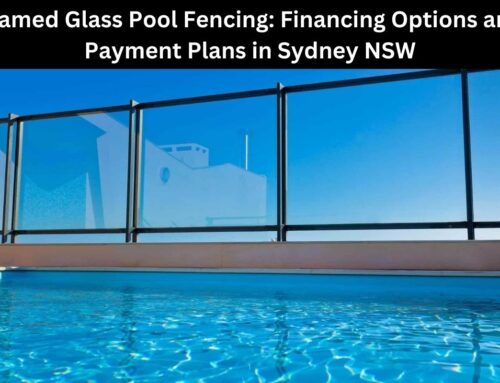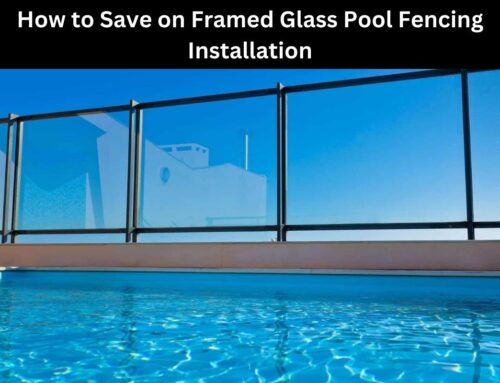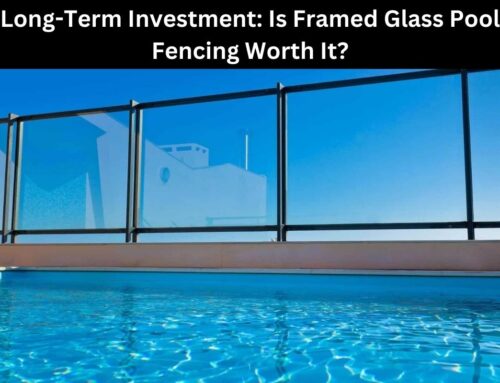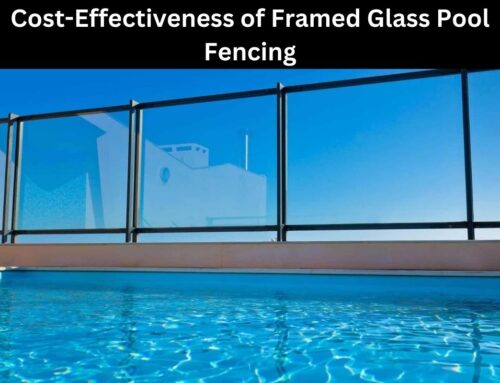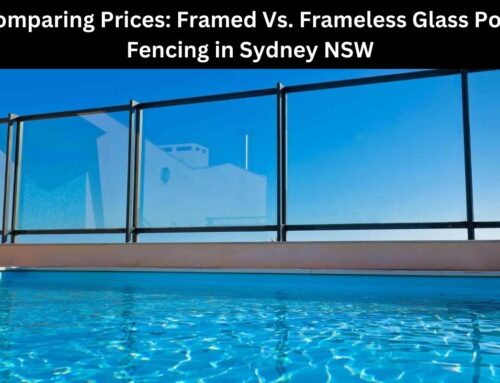Table of Contents
Imagine lounging by a sparkling blue pool, surrounded by clear glass panels that provide an unobstructed view of the water. The pool fence that encompasses this luxurious scene is semiframeless glass, a sophisticated and stylish choice that blends seamlessly with any outdoor environment.
But beyond its aesthetic appeal, have you ever considered the environmental impact of this type of pool fencing? In this article, we will explore the various aspects of the production, installation, maintenance, durability, and disposal of semiframeless glass pool fencing, with a particular focus on its environmental implications.
By examining the production process and materials used, considering installation and maintenance considerations, evaluating the durability and longevity of the fencing, and analyzing its environmental impact of disposal and recycling, we can make an informed comparison to other pool fencing options.
This objective, data-driven exploration will provide valuable insights into the environmental sustainability of semiframeless glass pool fencing, helping safety-conscious individuals make informed decisions about their pool enclosures.
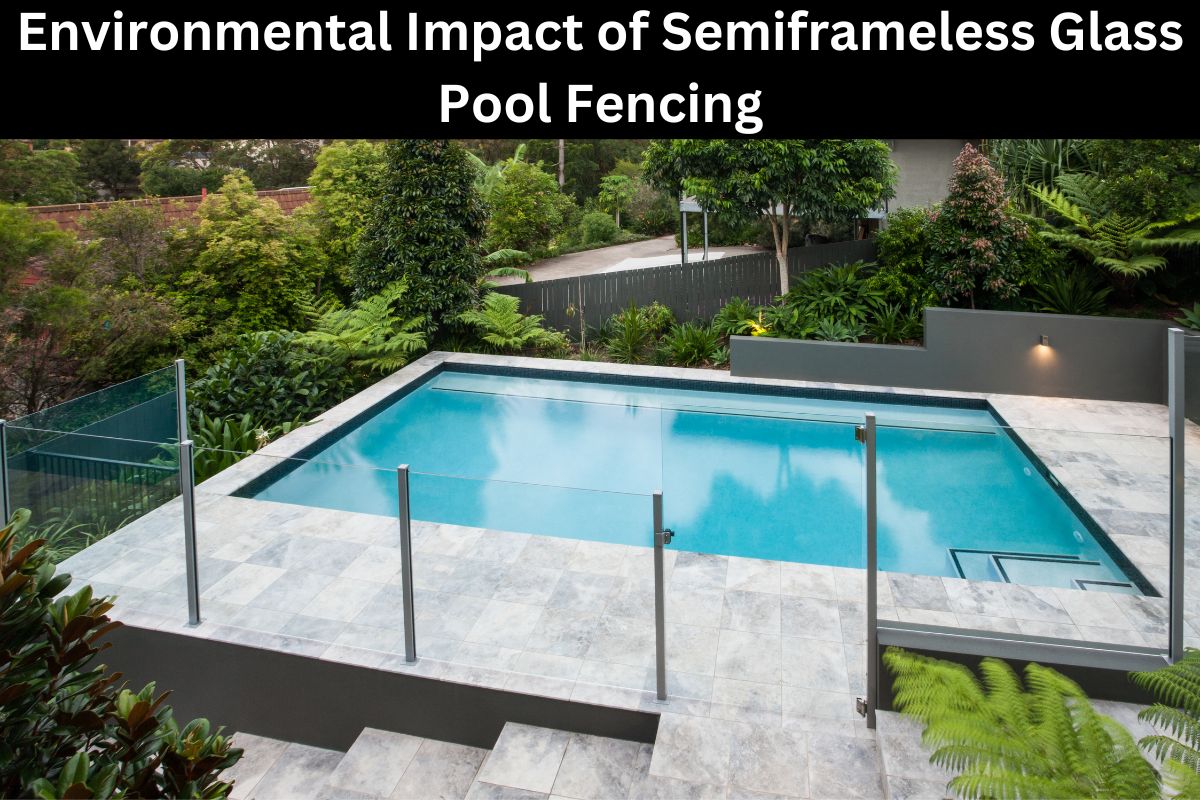
Key Takeaways
- Semiframeless glass pool fencing provides an unobstructed view of the water and blends with the outdoor environment.
- The production process of glass panels for semiframeless glass pool fencing requires substantial energy and may release harmful emissions and waste materials.
- Metal components used for the structural support of semiframeless glass pool fencing can have negative environmental consequences.
- Manufacturers can adopt sustainable practices such as using recycled glass and renewable energy sources to minimize the environmental impact of semiframeless glass pool fencing.
Production Process and Materials Used
The production process and materials used in semiframeless glass pool fencing significantly impact the overall environmental sustainability of this type of fencing system.
Glass panels used in semiframeless glass pool fencing are typically made from a combination of silica sand, soda ash, and limestone. The manufacturing process involves melting these raw materials at high temperatures, which requires a substantial amount of energy. Additionally, the production of glass panels may result in the release of harmful emissions and waste materials.
Furthermore, the production process also involves the use of metal components, such as stainless steel or aluminum, for the structural support of the fencing system. The extraction and processing of these metals can have negative environmental consequences, including habitat destruction, pollution, and energy consumption.
To minimize the environmental impact of semiframeless glass pool fencing, manufacturers can adopt sustainable practices such as using recycled glass or employing renewable energy sources in the production process. Additionally, using metal components made from recycled materials can help reduce the need for new metal extraction.
Considering the environmental implications of the production process and materials used in semiframeless glass pool fencing, it is crucial to also address the installation and maintenance considerations.
Installation and Maintenance Considerations
Installation and maintenance considerations should be carefully evaluated when implementing semiframeless glass pool fencing, ensuring that proper procedures are followed to guarantee its longevity and functionality. Here are some key points to consider:
- Professional installation: It is essential to hire a professional installer who has experience with glass pool fencing to ensure proper and secure installation. This will minimize the risk of accidents and ensure that the fence adheres to safety standards.
- Regular inspections: Regular inspections of the fencing should be conducted to identify any signs of damage or wear. This includes checking for loose or damaged glass panels, rusting of metal components, and any structural issues. Timely repairs or replacements should be carried out to maintain the integrity of the fence.
- Cleaning and maintenance: Regular cleaning of the glass panels is necessary to maintain visibility and prevent the buildup of dirt and grime. Using non-abrasive cleaners and soft cloths is recommended to avoid scratching the glass surface. Additionally, metal components should be inspected for signs of corrosion and cleaned accordingly.
- Safety precautions: It is crucial to educate pool users about the safety precautions associated with semiframeless glass pool fencing. This includes keeping the gate locked when the pool is not in use, ensuring that children are supervised at all times, and not relying solely on the fence for safety.
Considering these installation and maintenance considerations, the subsequent section will discuss the durability and longevity of semiframeless glass pool fencing.
Durability and Longevity of the Fencing
One important aspect to consider is the ability of the semiframeless glass pool fencing to withstand various external factors and maintain its functionality over time. Durability and longevity are crucial factors when it comes to ensuring the safety and security of pool areas.
Semiframeless glass pool fencing is known for its strength and durability. It is typically made from toughened glass, which undergoes a special heating and cooling process to increase its strength. This makes the fencing resistant to breakage and helps it withstand harsh weather conditions, such as strong winds and heavy rain. Additionally, the glass panels are usually supported by sturdy stainless steel or aluminum posts, further enhancing the durability of the fencing system.
The longevity of semiframeless glass pool fencing is also a significant advantage. Unlike other fencing materials that may deteriorate over time, glass is highly resistant to corrosion and decay. The stainless steel or aluminum components used in the fencing system are also designed to withstand the test of time. This means that once installed, the semiframeless glass pool fencing can remain in excellent condition for many years, providing consistent protection for pool users.
Transition sentence: Moving on to the next aspect, it is important to consider the environmental impact of disposal and recycling of semiframeless glass pool fencing.
Environmental Impact of Disposal and Recycling
Considering the disposal and recycling of semiframeless glass pool fencing, it is important to analyze its potential environmental implications.
Glass pool fencing is generally considered to be a more sustainable option compared to other materials such as wood or metal. Glass is a recyclable material that can be melted down and reused, reducing the demand for new resources. Additionally, the manufacturing process for glass fencing involves fewer chemicals and toxins compared to other materials, minimizing potential harm to the environment.
However, the disposal and recycling of glass pool fencing can still have some environmental impact. The transportation of the glass panels to recycling facilities contributes to carbon emissions, and the recycling process itself requires energy. Furthermore, if the glass panels are not disposed of properly, they can end up in landfills, taking up space and potentially leaching toxins into the soil.
Therefore, it is crucial to ensure that proper recycling facilities and processes are in place to minimize the environmental impact of glass pool fencing disposal. Transitioning to the subsequent section about the comparison to other pool fencing options, it is important to consider not only the environmental impact but also the safety aspects of different materials.
Comparison to Other Pool Fencing Options
Akin to a sturdy shield guarding against potential hazards, the comparative analysis of alternative materials for securing swimming pools provides valuable insights into their safety features. When considering pool fencing options, it is important to assess their environmental impact as well.
Semiframeless glass pool fencing, while being aesthetically pleasing, also boasts several advantages over other materials in terms of environmental sustainability.
Compared to traditional pool fencing options such as wood or metal, semiframeless glass pool fencing is a more eco-friendly choice. Wood requires cutting down trees, which contributes to deforestation, while metal production involves energy-intensive processes that release harmful greenhouse gases. In contrast, glass is a highly recyclable material, reducing the need for new production and minimizing waste.
Furthermore, semiframeless glass pool fencing is durable and long-lasting, reducing the need for frequent replacements. This not only saves resources but also minimizes the overall environmental impact associated with manufacturing and transportation.
In terms of maintenance, glass is easy to clean and does not require the use of harsh chemicals, making it a safer option for both the environment and pool users. Additionally, the transparency of glass allows for better visibility, enhancing overall safety by providing unobstructed views of the pool area.
When considering the environmental impact of pool fencing options, semiframeless glass emerges as a sustainable choice. Its recyclability, durability, and low maintenance requirements make it an eco-friendly option that does not compromise on safety.
Majestic Glass: The Gold Standard in Semi-Frameless Pool Fencing
Experience the gold standard in pool safety and aesthetics with Majestic Glass’ semi-frameless pool fencing in Sydney. Our semi-frameless fencing seamlessly combines the sleek aesthetic of frameless designs with the durability of traditional frames. Using high-quality glass, our expert team ensures both durability and refined aesthetics. Visit our main services page to get a more in-depth understanding of our unwavering commitment to quality and the unique advantages of opting for a Majestic Glass semi-frameless pool fence.
Frequently Asked Questions on Environmental Impact of Semiframeless Glass Pool Fencing
How does semiframeless glass pool fencing compare to other fencing options in terms of cost?
Semiframeless glass pool fencing is generally more expensive compared to other fencing options. However, the cost can vary depending on factors such as the size of the pool and the specific materials used for the fencing.
Can I install the semiframeless glass pool fencing myself, or do I need to hire a professional?
Semiframeless glass pool fencing can be installed by a professional or DIY, but hiring a professional ensures proper installation and compliance with safety regulations. Professional installation is recommended to ensure the highest level of safety for pool users.
Are there any specific maintenance requirements for semiframeless glass pool fencing?
Maintenance requirements for semiframeless glass pool fencing include regular cleaning to prevent buildup of dirt and grime, inspection for any cracks or damage, and ensuring proper alignment of panels. These measures ensure the safety and longevity of the fencing.
What is the estimated lifespan of semiframeless glass pool fencing compared to other materials?
The estimated lifespan of semiframeless glass pool fencing is typically longer compared to other materials such as wood or metal. This can be attributed to the durability and resistance of glass to weathering and corrosion, ensuring long-term safety and security for pool areas.
Is semiframeless glass pool fencing a sustainable option for the environment?
Semiframeless glass pool fencing is considered a sustainable option for the environment due to its durability, recyclability, and low maintenance requirements. It provides safety without compromising the aesthetic appeal of the pool area.
Conclusion
In conclusion, the environmental impact of semiframeless glass pool fencing is a topic that requires careful consideration. Throughout this article, we have explored the production process and materials used, installation and maintenance considerations, durability and longevity of the fencing, as well as the environmental impact of disposal and recycling.
It is evident that semiframeless glass pool fencing has a relatively low environmental impact compared to other pool fencing options. However, it is important to note that further research and analysis are needed to fully understand and minimize its potential ecological footprint.
Related Articles
Choosing the Right Material for Your Semiflameless Glass Pool Fence

